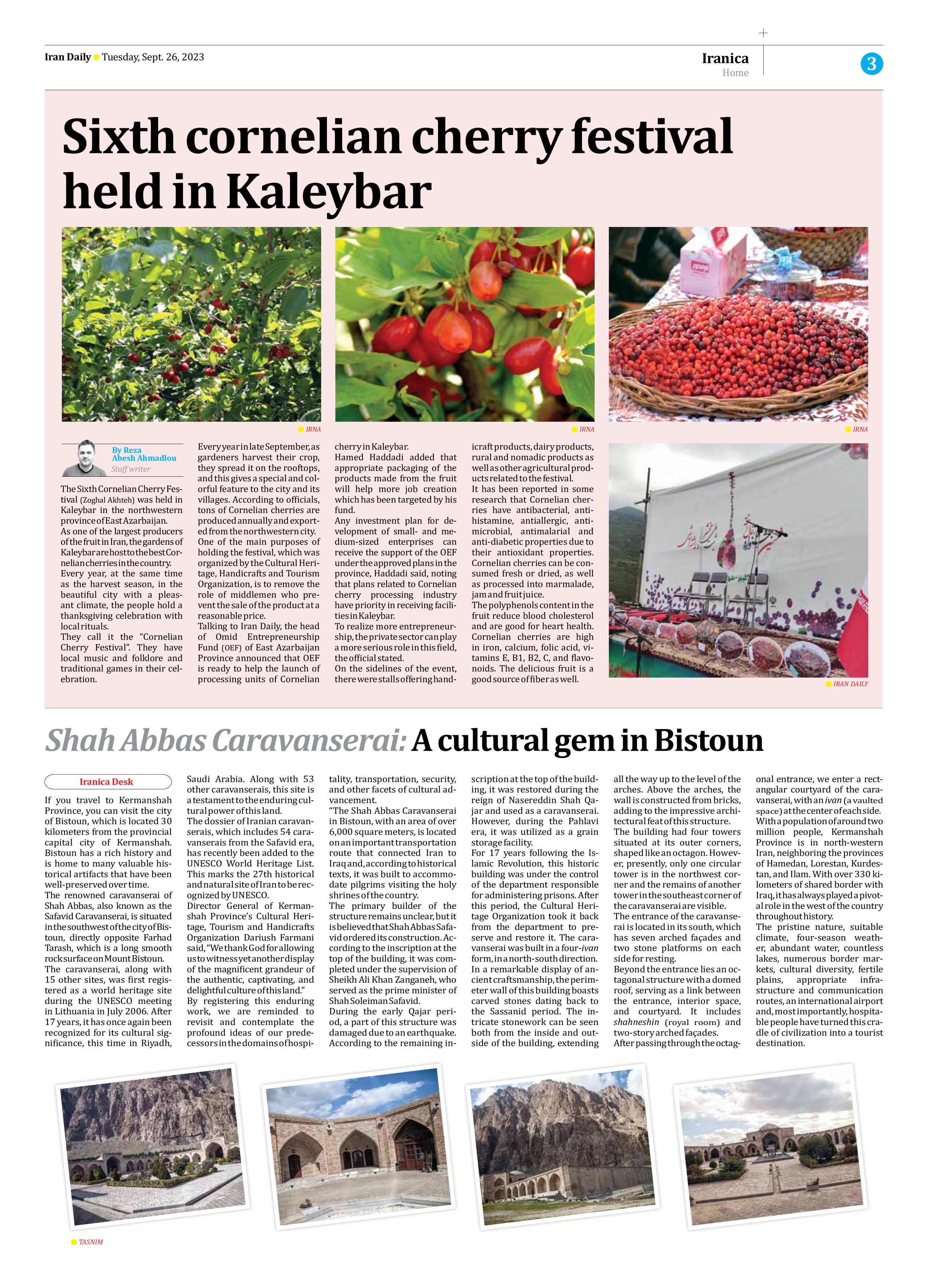
Shah Abbas Caravanserai: A cultural gem in Bistoun
If you travel to Kermanshah Province, you can visit the city of Bistoun, which is located 30 kilometers from the provincial capital city of Kermanshah. Bistoun has a rich history and is home to many valuable historical artifacts that have been well-preserved over time.
The renowned caravanserai of Shah Abbas, also known as the Safavid Caravanserai, is situated in the southwest of the city of Bistoun, directly opposite Farhad Tarash, which is a long smooth rock surface on Mount Bistoun.
The caravanserai, along with 15 other sites, was first registered as a world heritage site during the UNESCO meeting in Lithuania in July 2006. After 17 years, it has once again been recognized for its cultural significance, this time in Riyadh, Saudi Arabia. Along with 53 other caravanserais, this site is a testament to the enduring cultural power of this land.
The dossier of Iranian caravanserais, which includes 54 caravanserais from the Safavid era, has recently been added to the UNESCO World Heritage List. This marks the 27th historical and natural site of Iran to be recognized by UNESCO.
Director General of Kermanshah Province’s Cultural Heritage, Tourism and Handicrafts Organization Dariush Farmani said, “We thank God for allowing us to witness yet another display of the magnificent grandeur of the authentic, captivating, and delightful culture of this land.”
By registering this enduring work, we are reminded to revisit and contemplate the profound ideas of our predecessors in the domains of hospitality, transportation, security, and other facets of cultural advancement.
“The Shah Abbas Caravanserai in Bistoun, with an area of over 6,000 square meters, is located on an important transportation route that connected Iran to Iraq and, according to historical texts, it was built to accommodate pilgrims visiting the holy shrines of the country.
The primary builder of the structure remains unclear, but it is believed that Shah Abbas Safavid ordered its construction. According to the inscription at the top of the building, it was completed under the supervision of Sheikh Ali Khan Zanganeh, who served as the prime minister of Shah Soleiman Safavid.
During the early Qajar period, a part of this structure was damaged due to an earthquake. According to the remaining inscription at the top of the building, it was restored during the reign of Nasereddin Shah Qajar and used as a caravanserai. However, during the Pahlavi era, it was utilized as a grain storage facility.
For 17 years following the Islamic Revolution, this historic building was under the control of the department responsible for administering prisons. After this period, the Cultural Heritage Organization took it back from the department to preserve and restore it. The caravanserai was built in a four-ivan form, in a north-south direction.
In a remarkable display of ancient craftsmanship, the perimeter wall of this building boasts carved stones dating back to the Sassanid period. The intricate stonework can be seen both from the inside and outside of the building, extending all the way up to the level of the arches. Above the arches, the wall is constructed from bricks, adding to the impressive architectural feat of this structure.
The building had four towers situated at its outer corners, shaped like an octagon. However, presently, only one circular tower is in the northwest corner and the remains of another tower in the southeast corner of the caravanserai are visible.
The entrance of the caravanserai is located in its south, which has seven arched façades and two stone platforms on each side for resting.
Beyond the entrance lies an octagonal structure with a domed roof, serving as a link between the entrance, interior space, and courtyard. It includes shahneshin (royal room) and two-story arched façades.
After passing through the octagonal entrance, we enter a rectangular courtyard of the caravanserai, with an ivan (a vaulted space) at the center of each side.
With a population of around two million people, Kermanshah Province is in north-western Iran, neighboring the provinces of Hamedan, Lorestan, Kurdestan, and Ilam. With over 330 kilometers of shared border with Iraq, it has always played a pivotal role in the west of the country throughout history.
The pristine nature, suitable climate, four-season weather, abundant water, countless lakes, numerous border markets, cultural diversity, fertile plains, appropriate infrastructure and communication routes, an international airport and, most importantly, hospitable people have turned this cradle of civilization into a tourist destination.







